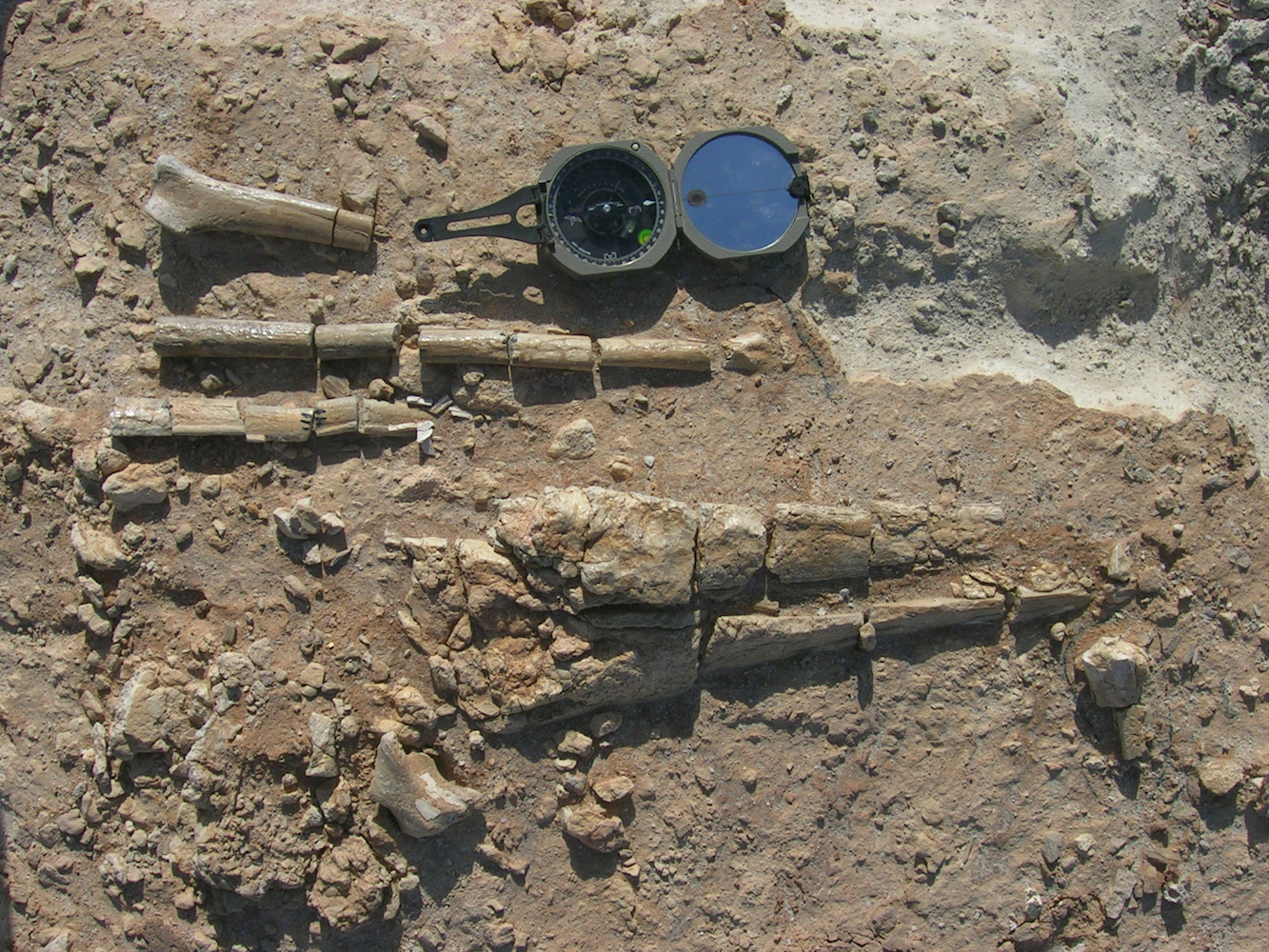Truck- and Plane-Size Pterosaurs Once Flew Over Dinosaurs

CALGARY, Alberta — The fossilized remains of two pterosaurs — winged reptiles that flew sky high during the dinosaur age — suggest that the soaring truck- and plane-size beasts were closely related to the gigantic Quetzalcoatlus northropi, the largest pterosaur on record, new research finds.
Both pterosaurs date back to the Maastrichtian, a period that occurred between 72 million and 66 million years ago. It ended when a 6-mile-wide (10 kilometers) asteroid slammed into Earth, ending the reign of the nonavian dinosaurs and countless reptiles, including the pterosaurs.
The newly unearthed pterosaurs were found in Jordan in 2005 and 2008, and both belong to a family of pterosaurs called Azhdarchids, which includes the famous Q. northropi — a pterosaur the size of an airplane, with an almost-40-foot (12 meters) wingspan. [Photos of Pterosaurs: Flight in the Age of Dinosaurs]
In general, pterosaurs had long wings supported by an elongated fourth digit (the ring finger on humans) and long, pointy beaks that helped them catch fish, and some had elaborate crests on their heads, said study lead researcher Kierstin Rosenbach, a doctoral student in the Department of Earth and Environmental Sciences at the University of Michigan.
"The pterosaurs from Jordan are both very big," Rosenbach told Live Science. "The 'small' one is a new species, and it would have had a wingspan of around 5 m [16 feet]." In contrast, the giant pterosaur was almost as humongous as Q. northropi, she said.
"It probably belongs to Arambourgiania philadelphiae, a giant pterosaur from Jordan first described in the 1950s," Rosenbach said.

Unlike most pterosaur fossils, which are "totally crushed when we find them, because their bones are hollow, like birds' bones," the newfound pterosaurs bones are preserved in three dimensions, she noted.
Sign up for the Live Science daily newsletter now
Get the world’s most fascinating discoveries delivered straight to your inbox.
"Since these bones retain their original shape, they can tell us a lot about how pterosaurs functioned," Rosenbach said. "We're going to study these fossils to understand more about internal bone structure and how it relates to things like body mass, flight capabilities and the pterosaur respiratory system."
Many pterosaurs had bizarre teeth, but the Jordan duo are toothless, Rosenbach added. "It's characteristic of their group," she said. "We know the teeth aren't just missing, because there are no tooth sockets in the jaw — [there's] just a smooth, sharp edge."
The findings are also remarkable because of where they were unearthed, the researchers said. During the Late Cretaceous, Africa was connected to Arabia as one continent. The two land masses had recently separated from what is now South America, India and Australia.
"But for some reason, we find way fewer fossils from Afro-Arabia than from its neighbors during this time," Rosenbach said. "So, each new discovery from the Late Cretaceous of Afro-Arabia gives us valuable information about what this continent was like leading up to the mass extinction that wiped out the dinosaurs and many other groups."

Other fossil finds dating to the Maastrichtian of Jordan include marine vertebrates, such as sharks, turtles, mosasaurs, plesiosaurs and crocodilians, as well as nine specimens of A. philadelphiae, the researchers said.
This research — a joint collaboration of the University of Michigan and the Natural Resources Authority in Jordan — which has yet to be published in a peer-reviewed journal, was presented here Aug. 23 at the 2017 Society of Vertebrate Paleontology meeting.
Original article on Live Science.

Laura is the archaeology and Life's Little Mysteries editor at Live Science. She also reports on general science, including paleontology. Her work has appeared in The New York Times, Scholastic, Popular Science and Spectrum, a site on autism research. She has won multiple awards from the Society of Professional Journalists and the Washington Newspaper Publishers Association for her reporting at a weekly newspaper near Seattle. Laura holds a bachelor's degree in English literature and psychology from Washington University in St. Louis and a master's degree in science writing from NYU.









